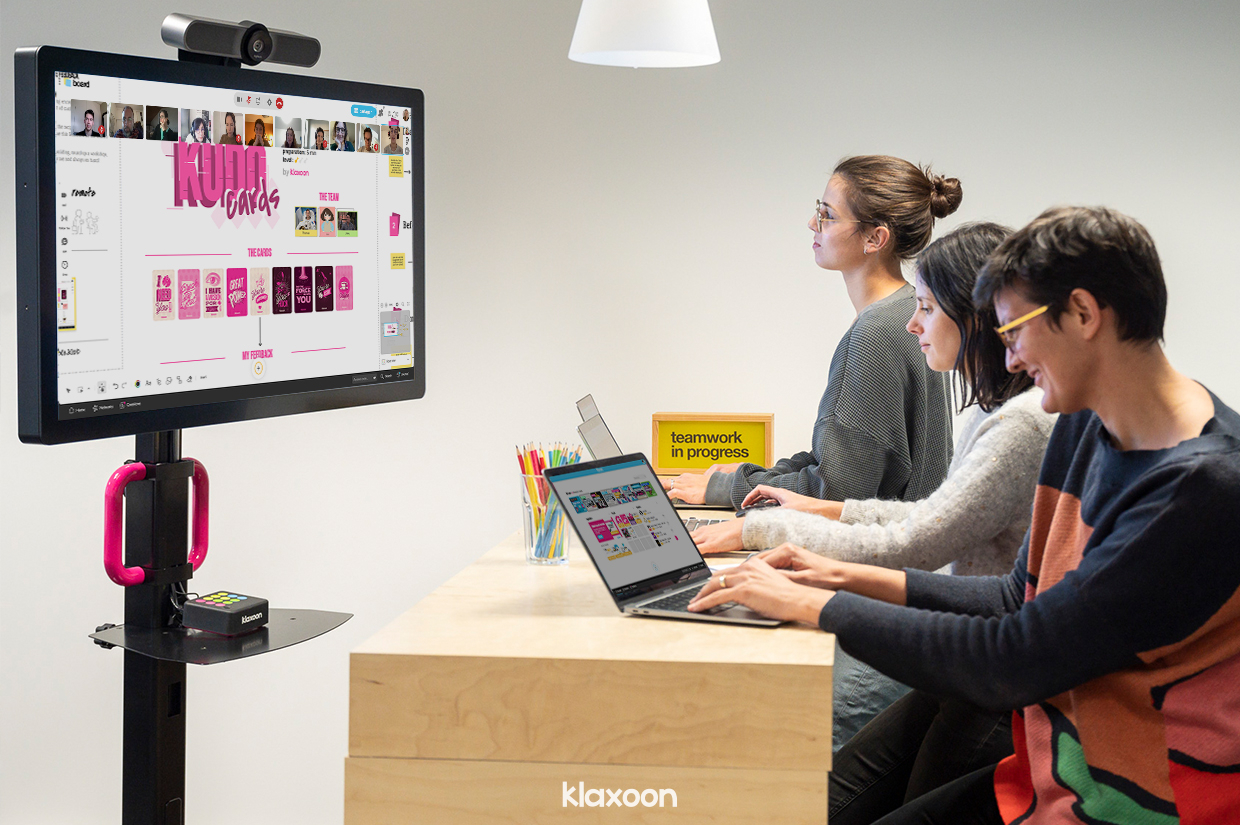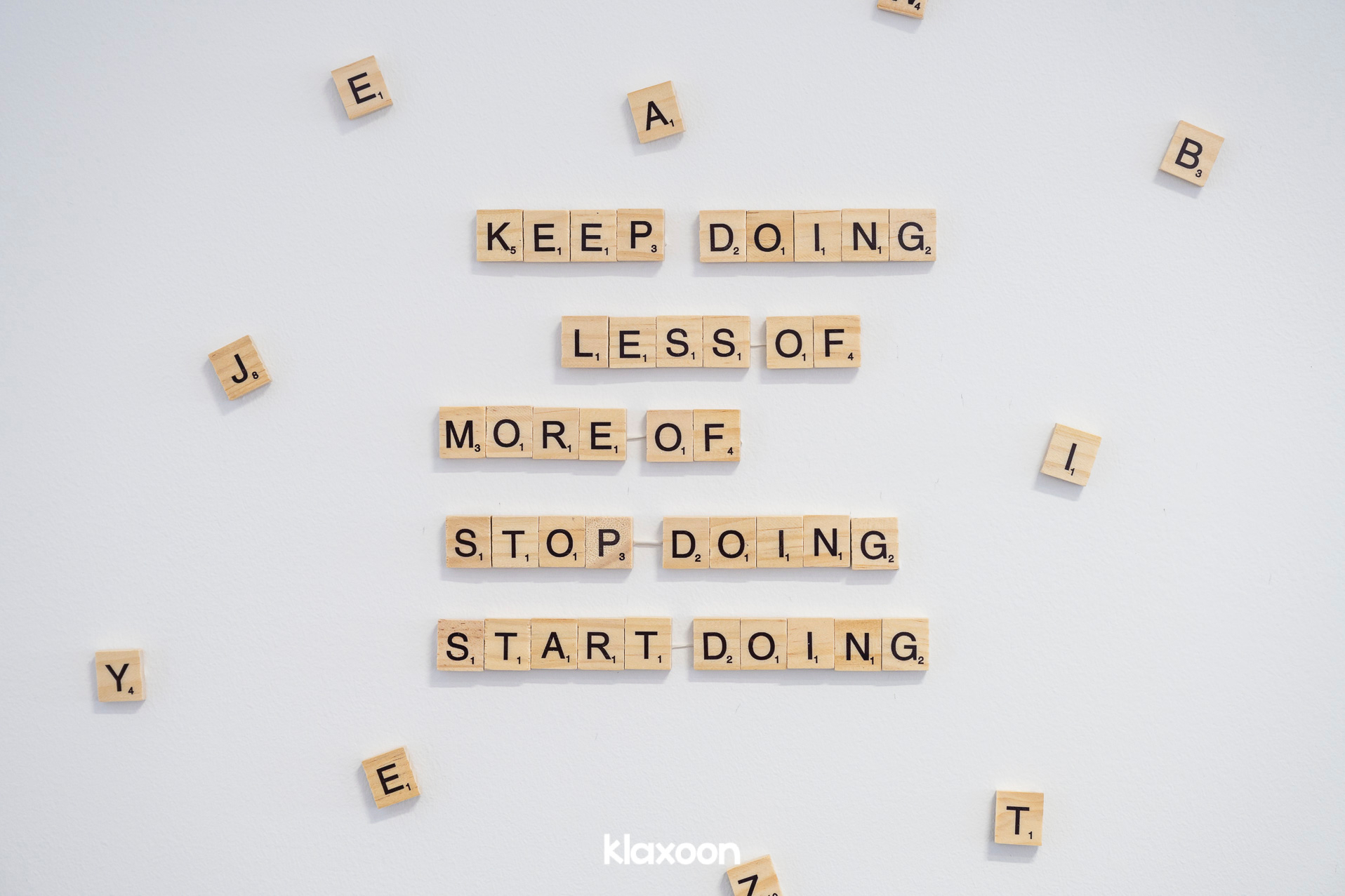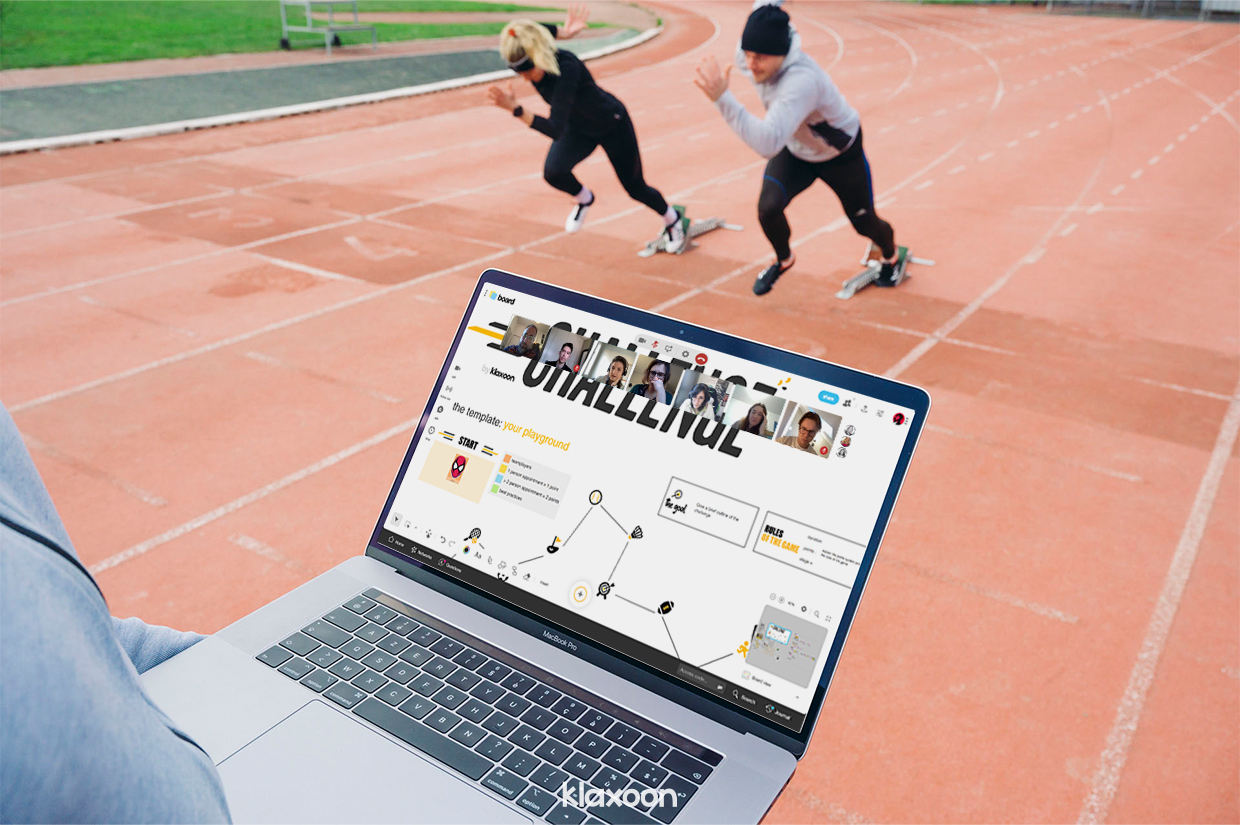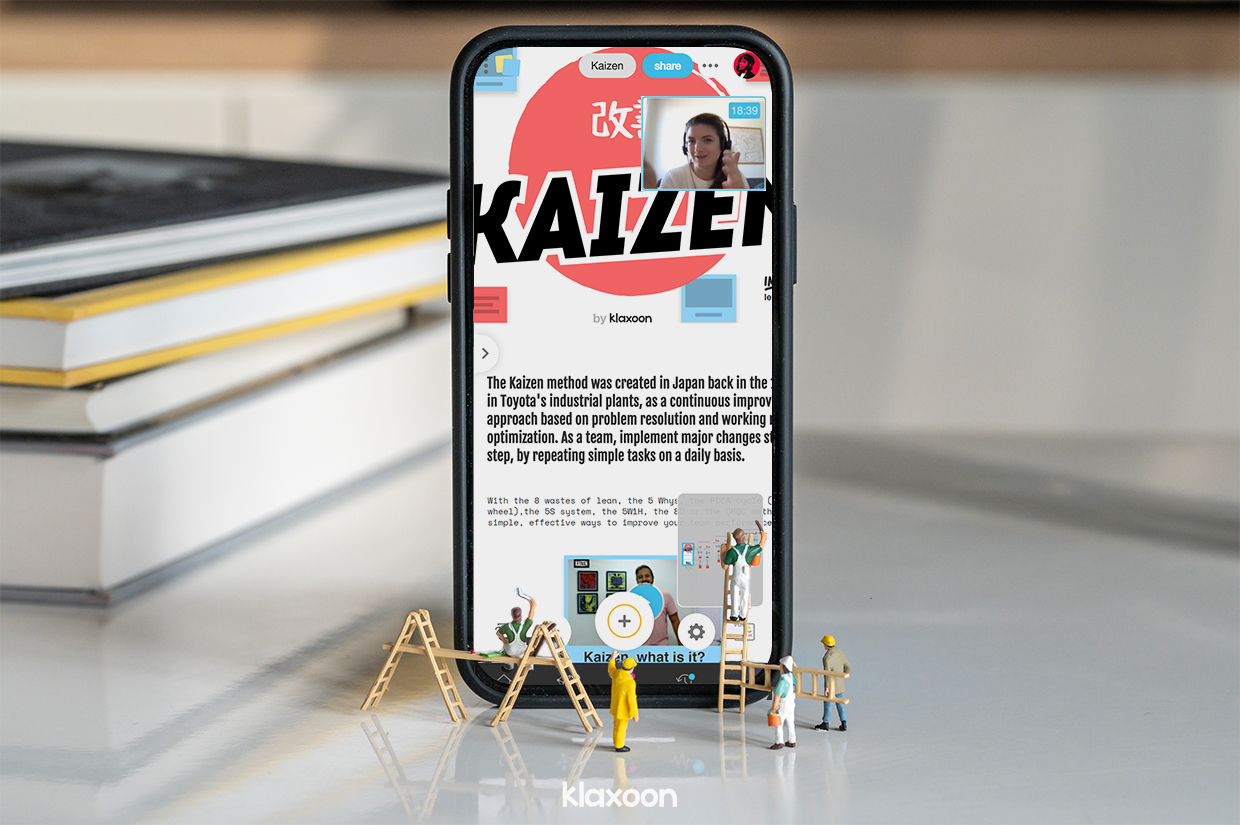5 essential ways to make your team thrive
Published on February 14, 2025
5 essential ways to make your team thrive
There are countless good reasons for wanting to improve teamwork. Boosting efficiency, being more innovative, selling more, being the best in your field. And only one team really matters: yours. Here are 5 simple ideas that are easy to implement to develop your team and improve your performance.
After more than 25 years at the helm of Manchester United Football Club - and an unparalleled track record - Sir Alex Ferguson knows a thing or two about coaching and motivating teams. When asked about this in a series of interviews in 2021, he confided: “For an athlete and even quite simply for a human being, there's nothing better than being told “well played”. No need for anything more.” There’s no doubt that encouragement is a sure fire way to motivate your employees and partners, in sport and elsewhere. But to really push your team and develop them, there are some things, even ones that seem to be really simple, that can help you.


This is something that needs no preparation and is often forgotten: the simple fact of congratulating and encouraging your employees. But sharing success stories is a factor in team development too. As was proved by the so-called Hawthorne effect.
According to a study carried out in the late 1920s at the Hawthorne factory plant (Illinois, United States) productivity increases when people feel included in the experience. The interest and trust placed in them encourages them to be more invested in what they're doing. In other words, appreciating individuals makes them better.
Nearly a century later, management methods continue to evolve. These days we talk about Management 3.0. This is a much more transparent way of organizing a company and circulating information for a more balanced relationship between managers and employees. It encourages independent working, self-management and risk taking, which often results in innovation. In short, more confidence improves efficiency.
If you want to try Management 3.0 by appreciating your teams, Kudo Cards are a great place to start.
They come from the Greek word, Kudos, which means glory or prestige for an accomplishment. In other words, congratulating someone. With a set of Kudo Cards, you can show your employees how much you value their work and encourage them. It's a very simple way of appreciating team members.
Discover the ready-to-use Kudo Cards template on Board in the Klaxoon template library.
And if you want to delegate even more responsibility in your teams, stick with playing cards and try Delegation Poker. Working as a team, you can determine everyone's level of responsibility. It's the ideal solution to build independence, confidence and skills.
By highlighting your team's successes, clever insights and efficient processes, you contribute to your future success. As an additional bonus, you’re instilling good practice.
No, retrospectives here are not about showing several films by the same director at your local cinema. It's about making time to analyze a project, once it's finished.
Yes, your team can move on and challenge itself at any time. Looking back at what you did, the processes and methods implemented when everything is finished is a very good way of improving teamwork. But why?
Because retrospectives are for finding out what worked and what didn’t, and therefore a way to improve. And spending time looking at these issues after a project is relevant for good reason - time spent on a retrospective is not always the same as time spent doing.
Your projects have a purpose, a goal. Which is to get things done. And in the heat of the moment, when everything is urgent, you mitigate problems rather than resolve them. So take some time to think about the way you managed your projects.
As you've seen, retrospectives are an opportunity to take an in-depth look at every aspect of your project. Why not try a template specifically designed for this purpose? There are lots of different types, but you can follow the following principles for your discussions.


Keep doing... Less of... More of... Stop doing... Start doing... These are the 5 cornerstones of an effective retrospective.
Using these 5 cornerstones, you’ll be able to create your action plan and move forward together as a team. You’ll even be able to make your workshop funnier by using cultural references.
Encouragement and retrospectives only work when everyone expresses their needs and ideas. It’s not always easy to assert yourself, to dare to speak out. But it’s essential to boost efficiency. So how do you do it? There are several possible solutions which might be worth combining.
This is one of the lessons we learned from Jérome Rajkovic, UX design & agile coach at Inetum. As part of his job, Jérôme and his teams run agile workshops. Some of these can involve more than a hundred participants over several days. With several years of experience and having run hundreds of workshops, Jérôme tells us he has massively improved his organization to boost efficiency: "Every aspect of a workshop can be challenged. Be it the templates used, formats, documents or the duration of each workshop. Using participant feedback, via polls or questions we were able to develop tools to boost efficiency. Since my initial workshops, these days I've gained at least 1 hour of work in a two day workshop.”
Management, coaching, teams, challenges, are we talking about sport or business? And why not both? The world of high performance sport and that of business have a lot in common. And if we more commonly refer to games when we mean sport, why not apply this to business?


Yes, even in a professional context, you can think in a playful way and awaken a competitive spirit in your employees to move the whole group forward. Just ask Guillaume Creach, the manager of an eyewear store in Rennes. Inspired by the NBA, the national basketball league in America, he came up with the idea of a sales challenge to boost his teams’ sales.
In this face off, two stores from the same network in the Rennes region were renamed Lakers and Bulls. Guillaume explains “Every year, our suppliers set us sales challenges to boost sales for some of their brands. Every employee is given the name of a player and has a scoreboard recording how many frames they’ve sold.”
The result for Guillaume's store: 30% more sales compared to the same challenge the previous year.
Buoyed by the challenge and the competitive dynamic between them, the whole team was able to move forward and improve its performance. The NBA reference added a playful touch to the project. And Guillaume concluded: “I can see a real difference in team commitment. This challenge helped us to boost each other.”
But don't forget. Just as it takes more than table tennis and table football to make an open space convivial, adopting a behavior inspired by sport for a business goal won't necessarily make it a success.
This type of challenge works because it is based on so-called SMART objectives. SMART is an acronym that stands for specific, measurable, achievable, relevant and time-bound. It's a way of defining goals that makes them easy to understand and sets you up for success.
In Guillaume's case the goals followed the SMART method.
Your challenges and desire to win must be based on specific goals which mean something for your team and your market. This is one of the prerequisites for leading your team with you.
Some businesses started out as a bet, a challenge. For example, do you know the history of the first Renault car?
In 1898, Louis Renault, a mechanics enthusiast who was fascinated by the growing automotive industry, built a small car in his workshop to get him around. On Christmas Eve that year he presented his creation to his friends. They were at the foot of Montmartre hill in Paris. One of them, teasing him, challenged him to use his vehicle to drive up rue Lepic, a particularly steep street in the neighborhood. Without hesitation, Louis Renault managed to do it behind the wheel of his little car. His friends and passers-by were impressed and ordered similar vehicles from him. And that's how Renault was launched!
Which just goes to show that the need to challenge yourself can lead to business success stories.
You appreciate your team, you make time for retrospectives for project debriefs, you encourage commitment and participation from everyone and you motivate your teams with challenges. Without even realizing it, you are building a culture of continuous improvement.
This can be summed up in one word. Kaizen. A Japanese word that means - you guessed it - continuous improvement. This strategy consists of numerous small steps that must be concrete, simple and inexpensive. To be effective, Kaizen must be practiced by every team, all managers and operational staff. As it is often the case with solutions from Japan, this one originated in the Toyota Motor Corporation.


Kaizen is implemented using various tools and methods that must enable the team to move forward by acting on their environment, on product quality and overcoming problems. You can start by using these:
There are numerous other methods derived from Kaizen. They can all help you boost efficiency and productivity and improve teamwork in any field.
If you're not convinced that Kaizen works, don’t forget that one car in 10 sold worldwide is a Toyota. That's what you call a flourishing business!
In short, to develop your team, you can:
What are you waiting for? Give it a go and help your team be the best it can be!
Unlock your teamwork potential